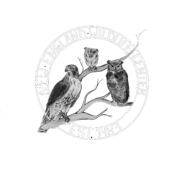At the center we receive a number of calls every year from frightened, curious or excited people who have a found a snake. The questions always focus around: Is it venomous? Can it bite? How do I get rid of it? Can I keep it? The answers are no, yes, why would you want to and no.
There are 10 species of snakes that are native to Cape Cod. None are venomous. I can’t say whether anyone is keeping a non-native venomous species as a pet. Snakes avoid humans by hiding or fleeing. If they are feeling threatened or cornered, or being handled, they will attempt to bite in self -defense. Depending on the size of the snake, those bites can be painful, so as with all wildlife, look and admire but don’t touch. Snakes can also “musk” when alarmed. They will emit a very foul -smelling substance from their anal glands.
Snakes in general are misunderstood and many people are fearful of them because of lack of information. Because they tend to hide and can curl into small spaces, they do startle people and that contributes to this fear. I don’t mind snakes, but having a black racer run across my foot after I startled it can make my heart race a bit, and then when it slows I can appreciate the experience. Snakes also get into places where they don’t belong, like in basements, especially when they are looking for a place to hibernate for the cold weather.
The most common snakes on Cape Cod are the Eastern Hognose, Rink Neck, Eastern Milk Snake, Black Racer, Northern Water Snake, Eastern Ribbon Snake and Eastern Garter Snake. These species can easily be looked up so you can identify what they look like. Some species, especially the Milk Snake has many color variations, and is the snake most often mis-identified. We get calls concerned that they are rattle snakes. I told a caller once that he didn’t need to worry because we don’t have venomous snakes on Cape Cod. He replied “ We never had sharks or bears either”. Good point, but right now as far as we know, we still have only non-venomous species.
Eastern Hognose snakes like sandy habitats for burrowing. They have a flat upturned snout. They are slow, and when threated, they flatten their head, and twist and turn to look scary. If that doesn’t work they roll over and play dead.
Ring-Neck snakes are very small and our most abundant snake, but because of their small size and their woodland habitat, they are not often seen. They are thin, dark and have an orange ring around their neck. We had a 10” one at the center that had a knot in its’ tiny tail. It was like taking a knot out of a necklace chain. So delicate, and successful.
Eastern Milk snakes are the most colorful and have variety from red and white, black and white and orange and white. They are very gentle and are about 3’ long. They are nocturnal and keep down our rodent population. Welcome them to your yard.
Northern Water Snake is large (3-5’), fast, and can be aggressive. They love our kettle ponds, and wetlands. If confronted they will coil up and mimic a rattlesnake by raising their head and vibrating their tail. It is all show, but they won’t hesitate to bite. Give them some distance. They are live -bearing (viviparous) along with the Eastern Ribbon snake and the Eastern Garter snake. The others are egg layers. The Eastern Ribbon snake is closely related to the Northern Water snake and also enjoys wetlands. Ribbon snakes eat amphibians.
Eastern Garter snakes are defensive rather than aggressive. These are found in urban and suburban locations. They are greenish, black or brown with a yellow or white stripe and 18-26” long. They eat mainly slugs, frogs and worms, which is why they can easily be found in your gardens, and can surprise you when you are quietly weeding. Try to enjoy the moment with them and thank them for ridding your garden of unwanted visitors.
How to protect snakes and why we should:
- Pay attention for snakes on our roadways and paths and slow down. Many are runover by motor vehicles and bicycles each year.
- Restore their habitat. Replant trees and let meadows and fields grow wild.
- Use fewer herbicides and pesticides, and use organic types. Hire goats to clear large areas if necessary. Snakes will die from these poisons and also from eating the rodents who have been killed by rodenticides.
- Use less plastic and do not litter. Snakes can trap their bodies in many forms of plastic. This past month we have had three snakes entangled in bird netting, with injuries, at the wildlife center. Once they get trapped they can’t leave and are either eaten by other animals, die of infection or starve to death. Please never use netting to protect your plants. It is deadly to birds also.
- Do not buy any products make from snake skins such as purses and wallets.
Teach yourself to be snake aware. Learn to co-exist with snakes. If you see a snake, don’t panic. Just back away and give it space. It is illegal to remove snakes from one location to another in Massachusetts , so let them be. If you have a snake in your home, call a professional to remove it and release it safely outside if you can’t do it yourself. Snakes deserve our respect. They play an integral role in our ecosystem, and keep down both our rodent and tick population.
To learn more about the Cape Wildlife Center or help in their mission, visit www.capewildlifecenter.com or call 508 362-0111.
Caryn Ritchie is the volunteer coordinator for the Cape Wildlife Center and holds both a Massachusetts wildlife rehabilitator’s license and a federal permit to rehabilitate migratory birds.

Recent Comments